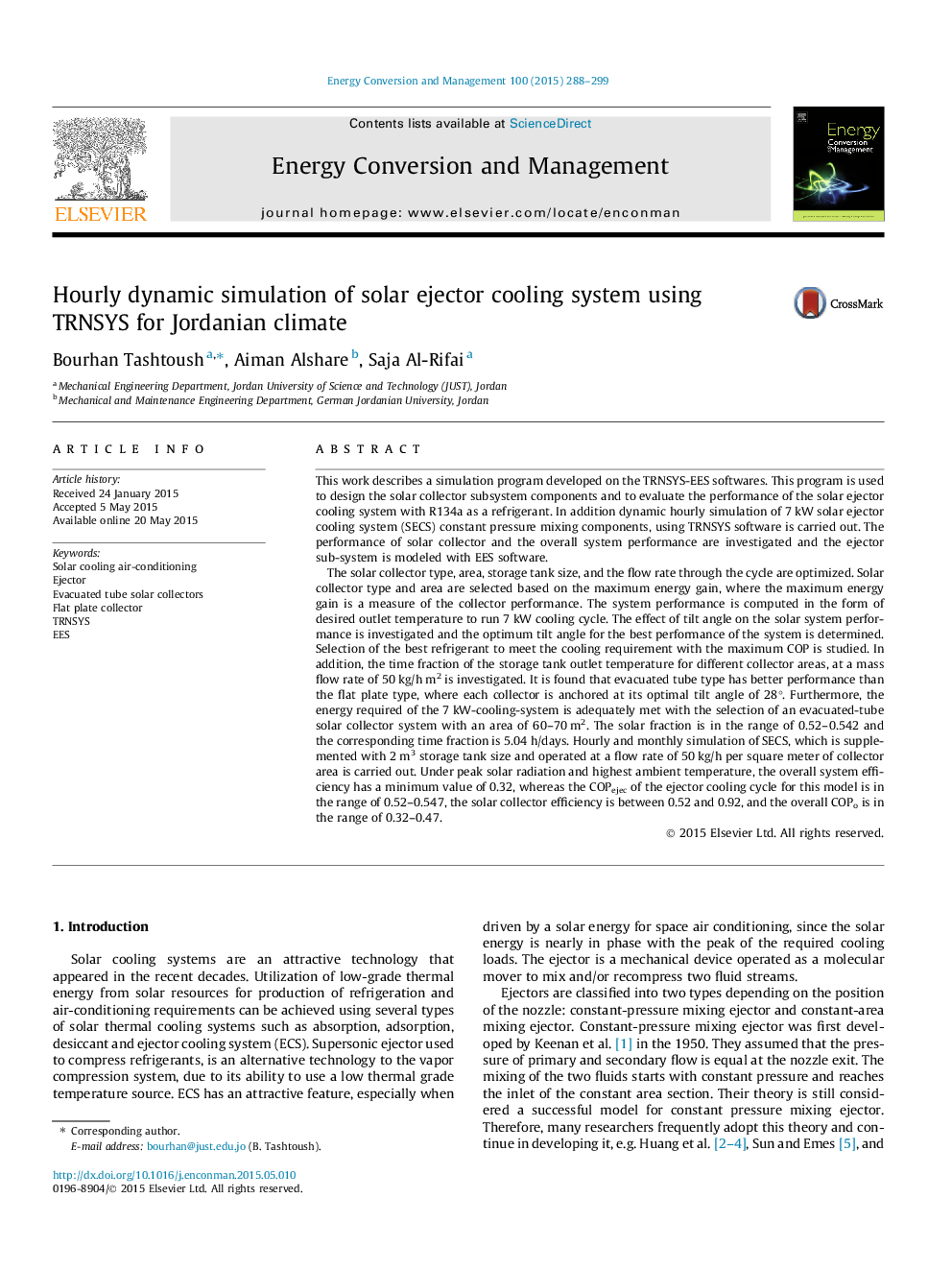| کد مقاله | کد نشریه | سال انتشار | مقاله انگلیسی | نسخه تمام متن |
|---|---|---|---|---|
| 763717 | 1462862 | 2015 | 12 صفحه PDF | دانلود رایگان |

• Development of a simulation program on the TRNSYS-EES software.
• Design of the solar collector subsystem components.
• Evaluation of the performance of ejector cooling system with R134a as a refrigerant.
• Dynamic hourly simulation of 7 kW solar ejector cooling system (SECS).
• Cooling system performance for Jordanian climate.
This work describes a simulation program developed on the TRNSYS-EES softwares. This program is used to design the solar collector subsystem components and to evaluate the performance of the solar ejector cooling system with R134a as a refrigerant. In addition dynamic hourly simulation of 7 kW solar ejector cooling system (SECS) constant pressure mixing components, using TRNSYS software is carried out. The performance of solar collector and the overall system performance are investigated and the ejector sub-system is modeled with EES software.The solar collector type, area, storage tank size, and the flow rate through the cycle are optimized. Solar collector type and area are selected based on the maximum energy gain, where the maximum energy gain is a measure of the collector performance. The system performance is computed in the form of desired outlet temperature to run 7 kW cooling cycle. The effect of tilt angle on the solar system performance is investigated and the optimum tilt angle for the best performance of the system is determined. Selection of the best refrigerant to meet the cooling requirement with the maximum COP is studied. In addition, the time fraction of the storage tank outlet temperature for different collector areas, at a mass flow rate of 50 kg/h m2 is investigated. It is found that evacuated tube type has better performance than the flat plate type, where each collector is anchored at its optimal tilt angle of 28°. Furthermore, the energy required of the 7 kW-cooling-system is adequately met with the selection of an evacuated-tube solar collector system with an area of 60–70 m2. The solar fraction is in the range of 0.52–0.542 and the corresponding time fraction is 5.04 h/days. Hourly and monthly simulation of SECS, which is supplemented with 2 m3 storage tank size and operated at a flow rate of 50 kg/h per square meter of collector area is carried out. Under peak solar radiation and highest ambient temperature, the overall system efficiency has a minimum value of 0.32, whereas the COPejec of the ejector cooling cycle for this model is in the range of 0.52–0.547, the solar collector efficiency is between 0.52 and 0.92, and the overall COPo is in the range of 0.32–0.47.
Journal: Energy Conversion and Management - Volume 100, August 2015, Pages 288–299